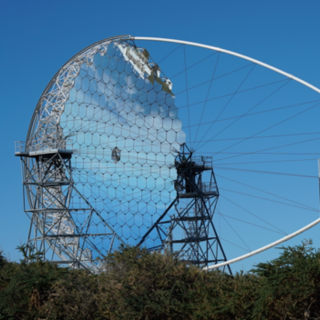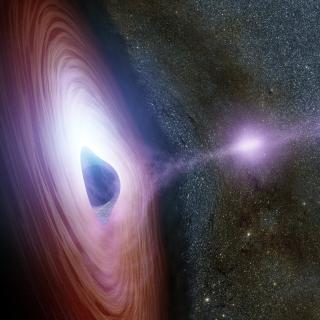Bibcode
Ghosh, Ritesh; Laha, Sibasish; Meyer, Eileen; Roychowdhury, Agniva; Yang, Xiaolong; Acosta-Pulido, J. A.; Rakshit, Suvendu; Pandey, Shivangi; Becerra González, Josefa; Behar, Ehud; Gallo, Luigi C.; Panessa, Francesca; Bianchi, Stefano; La Franca, Fabio; Scepi, Nicolas; Begelman, Mitchell C.; Longinotti, Anna Lia; Lusso, Elisabeta; Oates, Samantha; Nicholl, Matt; Cenko, S. Bradley; O'Connor, Brendan; Hammerstein, Erica; Jose, Jincen; Gabányi, Krisztina Éva; Ricci, Federica; Chattopadhyay, Sabyasachi
Referencia bibliográfica
The Astrophysical Journal
Fecha de publicación:
9
2023
Revista
Número de citas
5
Número de citas referidas
5
Descripción
1ES1927+654 is a nearby active galactic nucleus (AGN) that has shown an enigmatic outburst in optical/UV followed by X-rays, exhibiting strange variability patterns at timescales of months to years. Here we report the unusual X-ray, UV, and radio variability of the source in its postflare state (2022 January-2023 May). First, we detect an increase in the soft X-ray (0.3-2 keV) flux from 2022 May to 2023 May by almost a factor of 5, which we call the bright soft state. The hard X-ray 2-10 keV flux increased by a factor of 2, while the UV flux density did not show any significant changes (≤30%) in the same period. The integrated energy pumped into the soft and hard X-rays during this period of 11 months is ~3.57 × 1050 erg and 5.9 × 1049 erg, respectively. From the energetics, it is evident that whatever is producing the soft excess (SE) is pumping out more energy than either the UV or hard X-ray source. Since the energy source presumably is ultimately the accretion of matter onto the supermassive black hole, the SE-emitting region must be receiving the majority of this energy. In addition, the source does not follow the typical disk-corona relation found in AGNs, neither in the initial flare (from 2017 to 2019) nor in the current bright soft state (2022-2023). We found that the core (<1 pc) radio emission at 5 GHz gradually increased until 2022 March, but showed a dip in 2022 August. The Güdel-Benz relation (L radio/L X-ray ~ 10-5), however, is still within the expected range for radio-quiet AGNs, and further follow-up radio observations are currently being undertaken.
Proyectos relacionados

Astrofísica de Partículas
El Grupo de Astrofísica de Partículas del IAC participa activamente en tres grandes colaboraciones internacionales de astrofísica de muy altas energías: AMS-02 (Alpha Magnetic Spectrometer), los telescopios de radiación Cherenkov MAGIC I y II y el Cherenkov Telescope Array Observatory ( CTAO). Además, participamos en el ASTRI mini-array, el
Mónica Luisa
Vázquez Acosta

Variabilidad en Núcleos Activos de Galaxias: Estudios Multifrecuencia
Los núcleos activos de galaxias (AGN por sus siglas en inglés) se caracterizan por una potente emisión proveniente de una región muy compacta (sólo pocos pcs) en el centro de la galaxia. Los "blazars" son una categoría de AGNs, caracterizados por mostrar una alta luminosidad en un amplio rango de frecuencia, desde radio a altas energías (rayos X y
José Antonio
Acosta Pulido